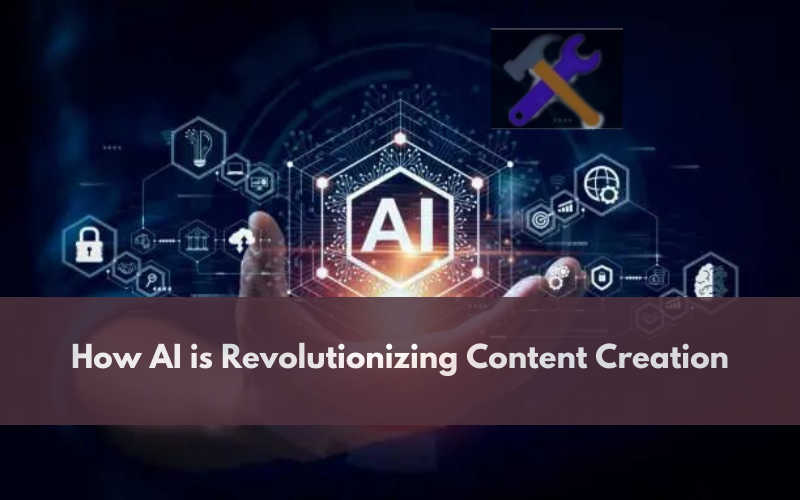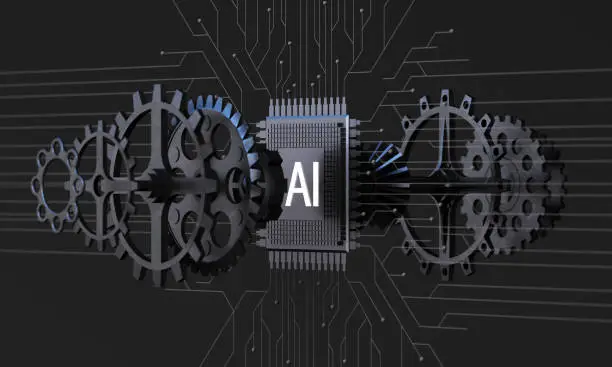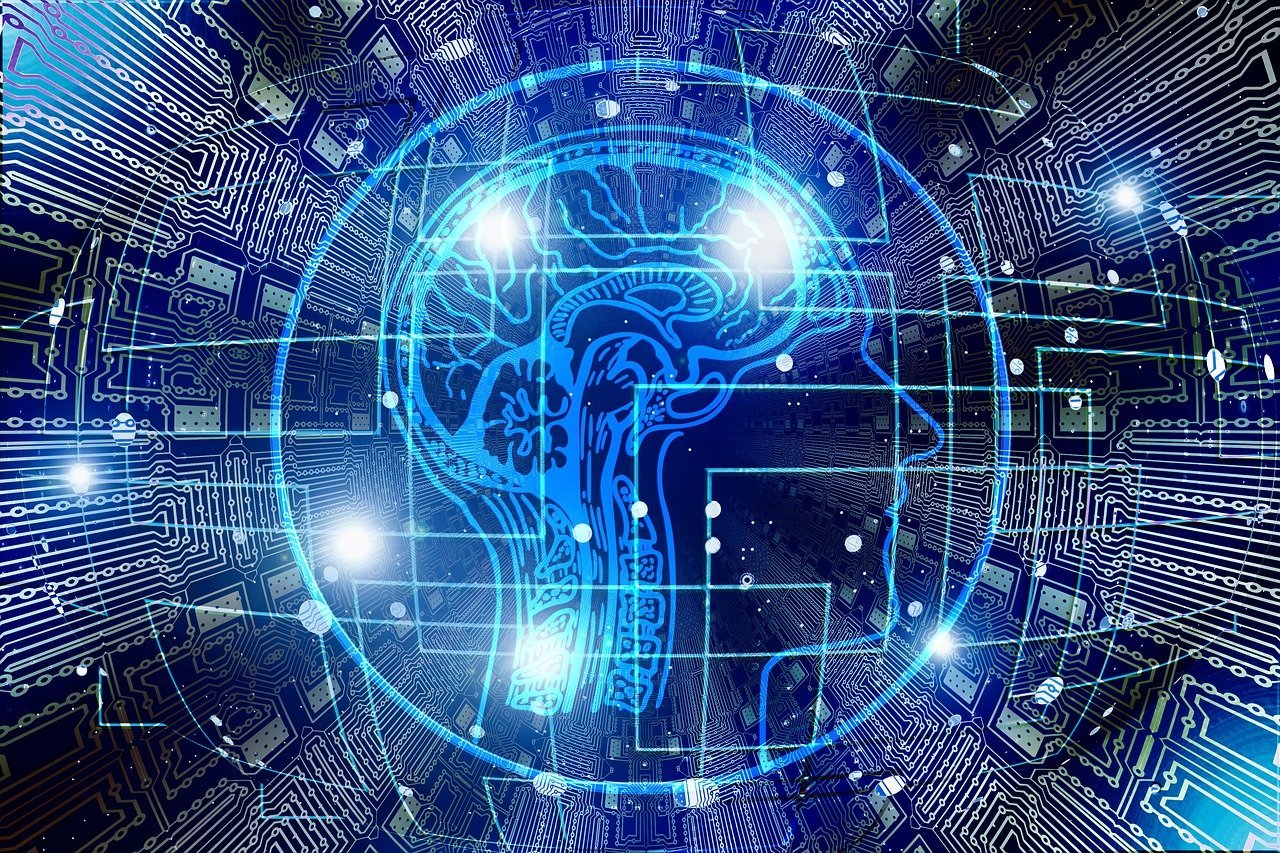
How AI is Revolutionizing Content Creation
Artificial Intelligence’s transformative power has revolutionized content creation across industries. It streamlines processes, from automated article writing based on data analysis to crafting personalized email content.
AI's ascent has brought efficient, data-driven article generation to the forefront. Beyond that, it's redefining personalized customer engagement by tailoring email content using behavioral insights. This innovation enhances efficiency and relevance, adapting to audience preferences.
The advantages of AI in content creation are clear. It expedites research, reveals emerging trends, and maintains relevance. To implement AI effectively, businesses can leverage NLP models for refined content, AI analytics for performance insights, and training resources for skill development.
AI's impact on content creation is profound, from automating articles to elevating personalized communication. Businesses that seize this evolution can reshape their content strategies successfully, navigating the future with technological prowess.
This blog post explores AI's role in reshaping content creation, highlighting its benefits and guiding businesses in integrating these technologies.
As we journey through this blog post, the myriad possibilities and opportunities that AI presents in reshaping content creation become all the more evident, underscoring the significance of embracing this technological tide.
AI in Content Creation
Artificial intelligence has disrupted traditional content creation methods, introducing advanced tools and techniques that streamline the writing process. Let's explore the key aspects of this revolution:
AI-Powered Writing Tools

AI-driven tools have redefined content creation, spearheaded by the exceptional GPT-3. This AI marvel possesses the ability to craft text mirroring human expression from given prompts.
This capability revolutionizes content creation, from comprehensive articles and blogs to impactful social media posts, extending even to product descriptions.
GPT-3's proficiency results from its fusion of cognitive understanding and computational might. Its extensive knowledge repository empowers it to process data and articulate coherent narratives that resonate with human eloquence, based on prompts.
This transformative power manifests across diverse content domains. GPT-3 efficiently generates articles and blogs, distilling complex concepts with finesse. In the concise realm of social media, it crafts engaging content that captivates.
GPT-3's influence extends to product descriptions, blending analytical insights with persuasive language to entice consumers.
As we embrace this AI-driven evolution, GPT-3 emerges as a catalyst for innovative content creation. The convergence of machine and human expression opens doors to new dimensions of communication.
The future promises even greater creative exploration through tools like GPT-3, illuminating the path toward enhanced content creation.
Implement AI-powered tools by:
#1. Choosing the Right Tool: The selection of an AI writing platform is akin to embarking on a purpose-driven journey. This process involves researching and pinpointing a reliable platform that seamlessly aligns with specific content needs.
The goal is to find a tool that harmonizes technology with creativity, effectively bridging the gap between intention and expression.
Research forms the cornerstone of this decision-making process. It entails assessing various AI writing platforms to uncover a solution that not only offers advanced features but also fits the unique nature and objectives of the content.
The chosen platform should be adaptable, and capable of capturing the essence of a brand's voice while catering to the diverse demands of different content styles.
This choice extends beyond technology; it's a creative partnership that empowers content creators. The selected platform should effortlessly decipher nuances, from industry-specific jargon to tone variations, ensuring the generated content aligns seamlessly with intended goals.
In a landscape where personalization reigns, the chosen platform should facilitate customization. It should empower creators to shape content through well-crafted prompts, guiding the AI to create narratives that resonate with authenticity.
#2. Crafting Prompts: Crafting prompts is an essential part of AI content creation. These cues direct the Artificial intelligence’s creative process, generating content aligned with the desired narrative.
Clear and concise prompts provide context, tone, and direction for the AI, resulting in precise and relevant content.
Effective prompts capture the core message and nuances, guiding the AI to bring the creator's vision to life. They balance clarity and brevity, conveying the task without overwhelming the AI. Well-constructed prompts pave the way for efficient content generation, minimizing the need for extensive editing.
Understanding the AI's strengths and limitations is crucial for crafting prompts that maximize its potential. Whether analyzing data, storytelling, or arguing a point, the right prompt ensures the AI's efforts are channeled effectively.
#3. Editing and Polishing: While AI can create content, human editing ensures coherence, accuracy, and a personal touch.
Editing and polishing emerge as content's refining crucible. AI generated content, yet it's human editors who infuse it with coherence, precision, and that vital personal touch.
Editing provides the thread that weaves content's fabric into a coherent narrative. Human editors ensure ideas flow seamlessly, engaging readers with logical progression. Accuracy is their vigilant shield, verifying data and rectifying potential inaccuracies to fortify content's credibility.
Crucially, human editing adds the intangible: a personal touch. While AI mimics expression, human editors infuse emotions, cultural insight, and authenticity. This layer establishes genuine connections beyond AI's reach.
Enhancing Content Quality with AI

The integration of AI introduces a transformative wave that not only generates content but also enhances its quality and relevance. AI's prowess extends beyond mere creation, offering a suite of tools that collaborate seamlessly with human ingenuity to craft content that resonates deeply with audiences.
#1. Content Optimization: AI's impact on content quality is particularly evident in content optimization. Utilizing AI tools, creators can venture beyond the surface, diving into the intricacies that determine a piece's resonance and visibility.
AI's analytical capabilities dissect keywords, ensuring they are strategically placed for optimal impact. Furthermore, AI optimizes readability by suggesting sentence structure and vocabulary enhancements, fostering a seamless flow that engages and retains readers.
Beyond linguistic finesse, AI is a potent ally in the realm of SEO, offering insights that elevate content's search engine ranking and visibility.
#2. Plagiarism Checks: AI emerges as a vigilant guardian of content authenticity, bolstering trust and credibility. Through AI-powered plagiarism detectors, the meticulous scrutiny of content across vast databases ensures that each piece remains a testament to originality.
This not only upholds the content's integrity but also safeguards against legal repercussions, underscoring the crucial role AI plays in maintaining content's authenticity.
#3. Personalization: The age of personalization dawns with the insights provided by AI. Through sophisticated analysis of user data, AI unveils patterns and preferences, facilitating the tailoring of content to specific audiences.
This personalization transcends superficiality, aligning content with individual preferences and creating a resonant connection that transcends generic outreach.
By infusing content with relevance and catering to specific needs, AI empowers content creators to forge profound relationships with their audience.
Efficiency and Speed of AI Content Generation
The fusion of AI and content creation has ushered in a paradigm shift, fundamentally altering the pace and efficiency at which content is produced. This technological synergy not only expedites the content generation process but also introduces transformative capabilities that redefine the boundaries of creation itself.
#1. Bulk Content Creation: At the core of this transformation lies AI's remarkable ability to expedite content production, particularly in the realm of bulk content creation. For content-intensive projects demanding a significant volume of articles, AI becomes an invaluable ally.
By swiftly analyzing data and synthesizing information, AI generates a large volume of articles with unparalleled speed. This dynamic enables content creators to tackle expansive projects with efficiency, meeting deadlines and surmounting challenges that once seemed insurmountable.
#2. Automation of Routine Tasks: AI's impact extends beyond content creation itself, permeating the realm of routine tasks that often consume valuable time and energy. Formatting, citations, and references, once laborious tasks, are now automated with precision and accuracy.
This liberation from mundane tasks empowers content creators to channel their creativity where it matters most—crafting compelling narratives and engaging content that resonates with audiences.
#3. Real-time Translation: In an interconnected world, the ability to communicate across linguistic boundaries is paramount. AI serves as a bridge, enabling rapid and accurate translation of content.
Real-time translation not only enhances accessibility but also expands content's reach to global audiences. Whether it's sharing ideas, insights, or information, AI-powered translation transcends language barriers, forging connections that transcend borders.
Future Prospects of AI in Content Creation

The future holds exciting possibilities:
#1. Advanced Language Capabilities: AI's growth trajectory is marked by a relentless pursuit of excellence in language comprehension and expression. The future holds a promise of AI systems that possess an even deeper understanding of linguistic nuances and context.
This evolution extends beyond mere grammar and syntax; AI will unravel the subtleties of tone, style, and cultural intricacies, resulting in content that resonates with authenticity and emotional depth.
AI will be able to weave narratives that not only convey information but also evoke emotions, blurring the line between human and AI-generated content.
#2. Multimedia Integration: AI's influence transcends text, heralding an era where content is a rich amalgamation of mediums. The future envisions AI seamlessly integrating multimedia elements into content creation.
Images, videos, animations, and interactive elements could be auto-generated by AI, complementing textual narratives to create immersive and engaging experiences.
This fusion of mediums adds a new dimension to content, transforming it from static information to dynamic storytelling that captivates and educates in unprecedented ways.
#3. Hyper-Personalization: The concept of one-size-fits-all content becomes archaic in the future content landscape. AI's capabilities in analyzing user data will fuel hyper-personalization, where content is tailored with remarkable precision to individual user preferences.
From articles to advertisements, each piece of content will be a bespoke experience, resonating with readers on a personal level. AI's insights will anticipate user needs, crafting narratives that align with their interests, behaviors, and aspirations, fostering a profound sense of connection.
Implementing AI in Your Content Strategy
The integration of AI into content strategies ushers in a new era of efficiency, creativity, and engagement. As organizations embark on this transformative journey, a strategic approach becomes the compass that guides seamless implementation and maximizes AI's potential.
#1. Start Small: Embarking on the AI journey doesn't necessitate an all-encompassing leap. Begin with a pragmatic approach by automating routine tasks. This allows for a gradual introduction of AI into the content creation process, ensuring a smooth transition.
Automating tasks like data analysis, formatting, or even basic content generation can provide a glimpse of AI's capabilities while minimizing disruption.
#2. Human-AI Collaboration: The essence of successful AI integration lies in the synergy between human creativity and AI efficiency. Recognize that AI is not a replacement for human ingenuity but rather a partner that amplifies it.
Employ human expertise to set creative directions, devise compelling narratives, and infuse content with emotional resonance. Meanwhile, delegate repetitive tasks to AI, enabling content creators to focus on higher-order thinking and strategic ideation.
This collaboration extends to content refinement. While AI can generate content, human editors inject nuance, accuracy, and the intangible essence that only human sensibilities can provide.
The marriage of AI's analytical prowess with human insight crafts content that strikes a harmonious balance between innovation and authenticity.
#3. Continuous Learning: The AI landscape is dynamic, evolving with each passing day. Embrace the philosophy of constant learning to harness AI's full potential. Stay updated with advancements in AI technology, and understand its capabilities and limitations.
This knowledge empowers content creators to make informed decisions about when and how to leverage AI within their strategy. By keeping a finger on the pulse of AI trends, you ensure that your content strategy remains relevant and competitive.
Conclusion
Embrace the AI-driven content revolution and unlock new dimensions of efficiency and creativity in your content creation process. As technology evolves, so does the potential to reshape the future of writing.